The Dassault Rafale and the Lockheed Martin F-35 Lightning II are two of the most advanced fighter jets in the world. While both aircraft are designed to perform a wide range of missions, there are significant differences between the two. Both these aircraft are designed and developed with different philosophies and capabilities in mind.
Follow us on Google News to get the latest defense news and analysis
Here is a detailed Rafale vs F-35 comparison:
Design and Capabilities:
The Dassault Rafale, a 4th-generation omnirole fighter aircraft designed to perform air-to-air and air-to-ground missions. It has a delta wing design with close coupled canards and is capable of supersonic speeds, making it highly maneuverable.
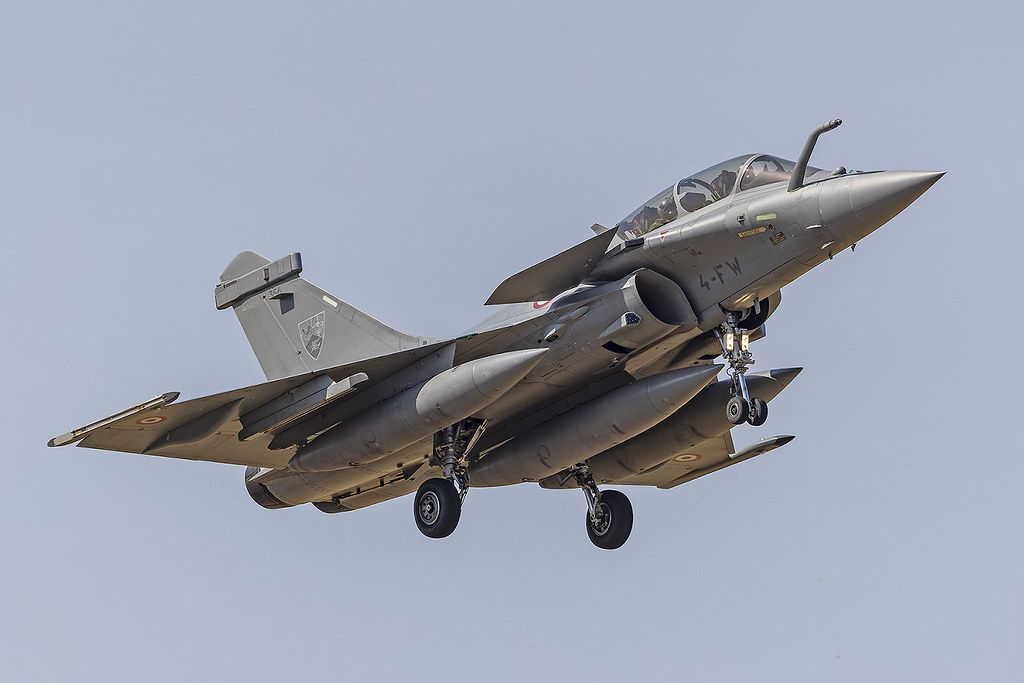
The F-35, a 5th-generation jet on the other hand, is a stealth fighter aircraft designed primarily for air-to-air and air-to-ground missions. It has a stealthy design that makes it difficult to detect on modern radars and can perform a wide range of missions, including air-to-air combat, intelligence gathering, and electronic warfare in highly sophisticated battle environments.
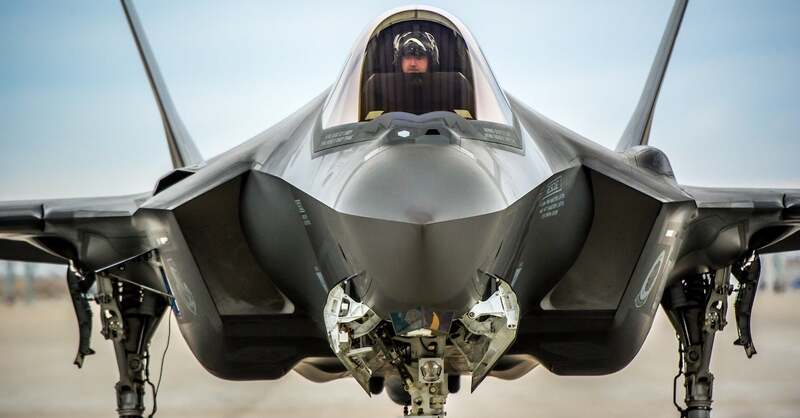
Development Histories, Dassault Rafale vs F-35:
Both these aircraft were developed based on the different operational requirements and roles. Let’s look at some of them.
The Rafale program was started in the mid 1970s with a combined requirements from French Air Force and Navy. Actually, the French required an omnirole fighter jet that fulfilled the future needs of the two forces. The workhorse that should perform a wide range of combat missions such as, anti-Access / area denial, air-defense / air Superiority, reconnaissance, close air support, buddy-buddy refueling, air-to-surface precision strike, and nuclear deterrence.
On the other hand, the F-35 Lightning II was developed under the Joint Strike Fighter (JSF) program. It was the collective effort of the USA along with 13 allied countries which include the United Kingdom, Australia, Italy, Canada, Norway, Netherland, Denmark, and Turkey. Actually, the two big companies, Boeing and Lockheed Martin compete for the JSF program with their aircraft models X-32 and X-35. The later won the competition and got approval for the development of a new-generation fighter jet. F-35 design focuses on low observables, next-generation avionics, and sensor fusion that enables a high level of situational awareness and long-range lethality.
Engines:
Let’s find out the powerhouse of the “Rafale vs f-35”;
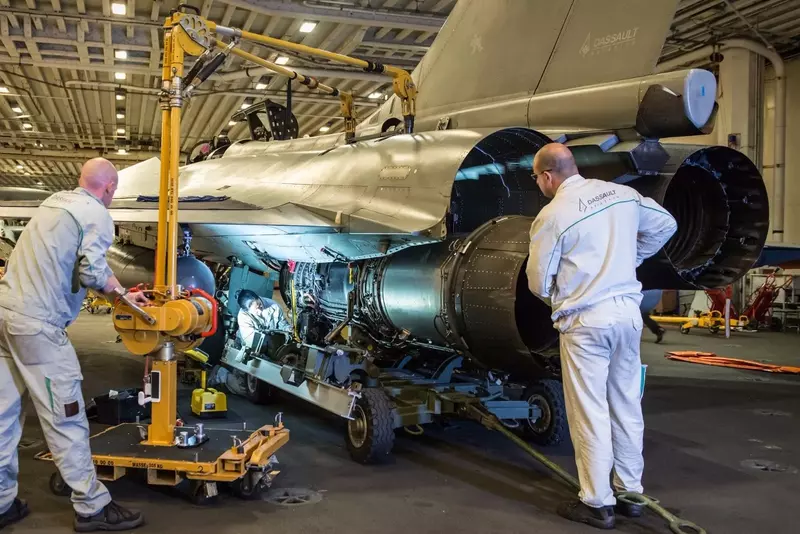
The Rafale is powered by two Snecma M88-2 new-generation turbofan engines, while the F-35 is powered by a single Pratt & Whitney F135 turbofan engine. The F-35’s engine is more powerful than the M88 and provides the F-35 with an unmatched performance during flight. However, the Rafale’s two engines provide it with greater redundancy and make it more reliable.
The two M88-2 engines provide Rafale with 2x75kN of thrust with a maximum speed of Mach 1.8. The engine is equipped with ‘Full Authority Digital Engine Control’ (FADEC). The F-35’s Pratt & Whitney F135 engine is the most advanced in the world. With more than 40,000 lbs of thrust, unmatched low-observable signature, world-class thermal management and most advanced integrated engine control system ever created. The F135 engine is a marvel of modern engineering, from design and development to production and sustainment, it is a pinnacle of combat propulsion.
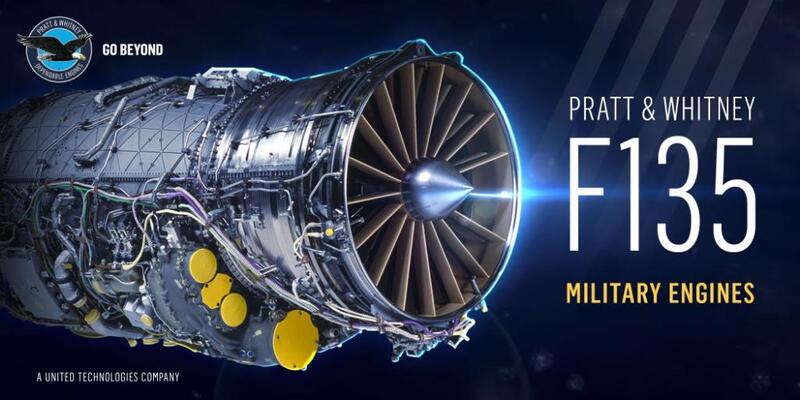
Weapons:
Both aircraft are equipped with a wide range of weapons, including air-to-air, air-to-ground missiles, bombs, and guns.
Rafale vs F-35, Weapon Package;
The Rafale is equipped with the MICA and METEOR air-to-air missiles, as well as the SCALP air-to-ground missile. Air-to-ground weapons include HAMMER (Highly Agile and Maneuverable Munition Extended Range), SCALP (European Storm Shadow) long-range, stand-off missile with a range of 250+ km. Aircraft can carry AM39 EXOCET anti-ship missiles in air-to-surface category. Also the Rafale comes up with a stores management system Mil-Std-1760 compliant, which provides easy integration of customer selected weapons.
The F-35 is equipped with the AIM-120 AMRAAM and AIM-9x Sidewinder air-to-air missiles. In air-to-ground category the jet can carry Joint Direct Attack Munition (JDAM) air-to-ground missile along with Joint Stand-Off Weapons (JSOW) along with cluster munition, Spear anti-tank missiles, and various precision guided glide bombs. In air-to-surface mode, the aircraft can carry AGM-88G, and AGM-158C anti-ship missiles.
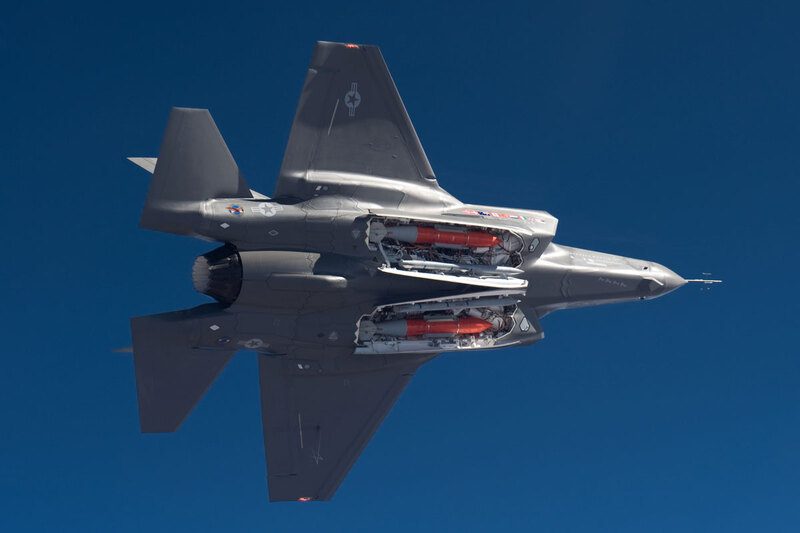
The F-35 has two internal weapons bays with four weapon stations in a stealth mode. In a non-stealth mode, the fighter jet can use six external weapon stations for missions to carry weapons in a beast mode.
Rafale vs F-35, Internal Cannon Type:
The Rafale fighter jet is also fitted with ‘NEXTER 30M791’ 30 mm internal cannon. It has the capacity of firing 2500 rounds/min. On the other hand, the F-35A variant carries one 25mm GAU-22A internal cannon with 182 rounds of onboard ammunition.
Avionics:
Radar:
The F-35 is equipped with the most advanced avionics suite of any fighter aircraft in the world. The pinnacle of that avionics suite includes AN/APG-81 AESA fire control radar, the latest and most capable AESA radar in the world as described by Northrop Grumman. It provided the F-35 fighter jet with unparalleled situational awareness. The radar has active and passive long-range air-to-air and air-to-ground detection modes. It also provides significant electronic warfare and signal intelligence capabilities. Northrop Grumman also plans to develop the more capable variant named AN/APG-85 AESA radar with more powerful electronic warfare capabilities.
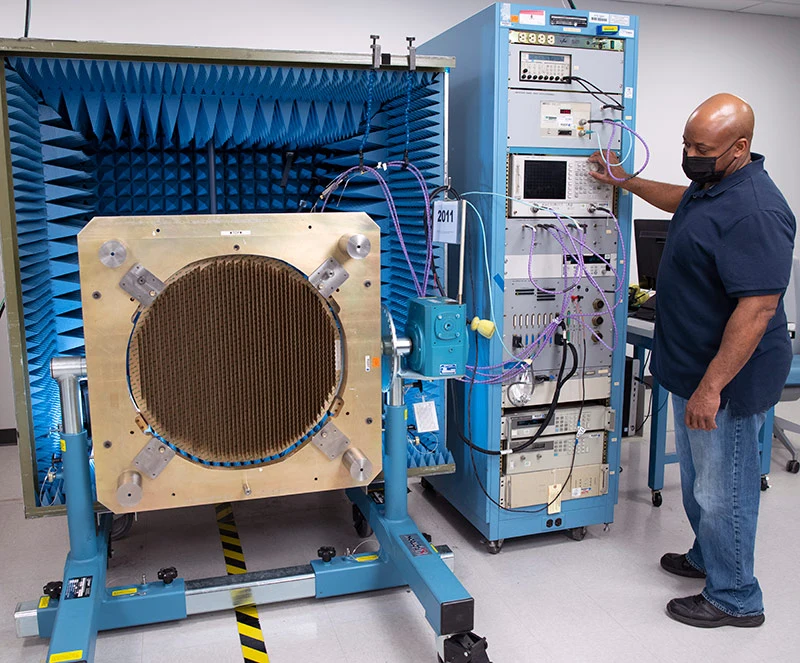
The Rafale on the other hand is equipped with the RBE2 AESA radar developed by Thales. The development of this Europe’s first AESA radar is based on unmatched know-how of the past experience of Thales in radar development. “With its superior beam agility and its enormous computing power, the RBE2 offers outstanding performance that cannot be replicated by mechanical scanning radars.” According to Dassault Aviation.
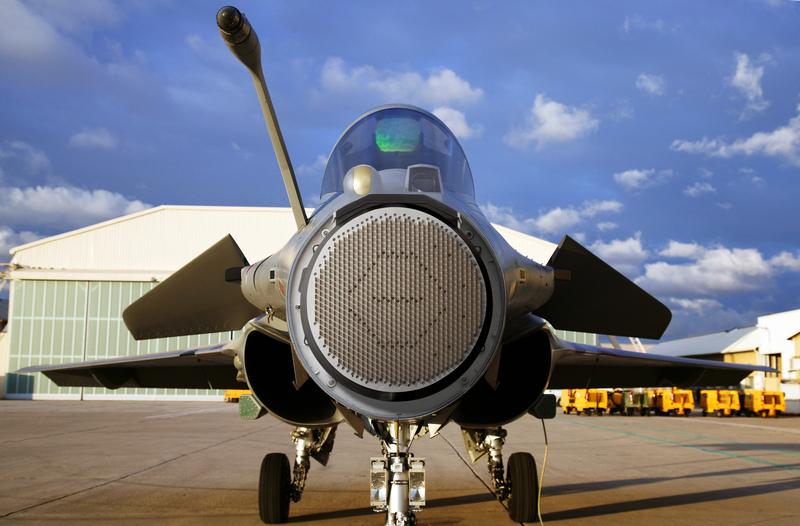
RBE2 radar offers real-time generation of 2D and 3D maps, greater wave form agility, and all aspect look-up and look-down detection and tracking of multiple targets. It can track up to 8 targets at the same time.
No doubt in comparison of radars between Rafale vs F-35, the RBE2 is an advanced AESA radar but it is not as capable as the Northrop Grumman’s AN/APG-81 AESA radar developed for 5th-generation fighter jets.
Sensor Suite:
Rafale carries on-board with advanced SPECTRA internal electronic warfare suite, front sector optronics (FSO), targeting and laser designation pod (TALIOS) and AREOS reconnaissance pod. Using these advanced systems, Dassault introduced a ‘multi-sensor data fusion’ technology that helps pilots to reduce workload, increase situational awareness, and quick response in highly contested battle environments. Also, the SPECTRA internal electronic warfare suite is the cornerstone of the Rafale’s extraordinary survivability during combat.
According to Dassault Aviation, the Rafale’s ‘multi-sensor data fusion’ process runs on data provided by all sensors of the aircraft. The multi-sensor data fusion concept implemented into Rafale allows the pilot to act as a true “tactical decision maker”, rather than being only a sensor operator.
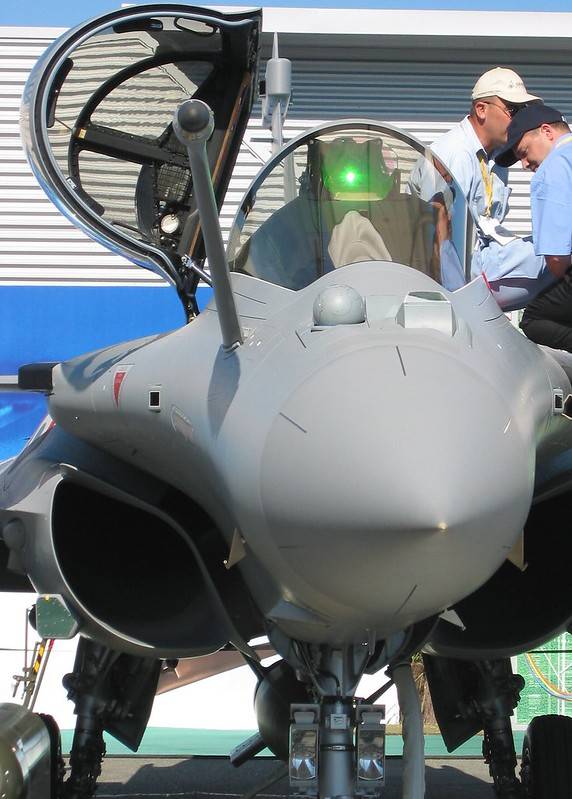
F-35 carries on-board the highly advanced AN/ASQ-242 communications, navigation, and identification suit manufactured by Northrop Grumman, AN/ASQ-239 Barracuda Electronic Warfare System developed by BAE Systems, AN/AAQ-37 Distributed Aperture System (DAS) jointly produced by Northrop Grumman and Raytheon, and AN/AAQ-40 Electro-Optical Targeting System (EOTS) by Lockheed Martin.
Cockpit Comparison:
Rafale came up with the easy-to-use Man-Machine Interface (MMI), developed by Dassault Aviation. It combines ‘Hands on Throttle and Stick’ (HOTAS) control concepts with touch screens. The fighter aircraft also has a head-up display (HUD) and two left and right touch screens to display all mission information. Cockpit also includes a tilted 29 degrees seat with increased G-protection and an efficient air conditioning system.
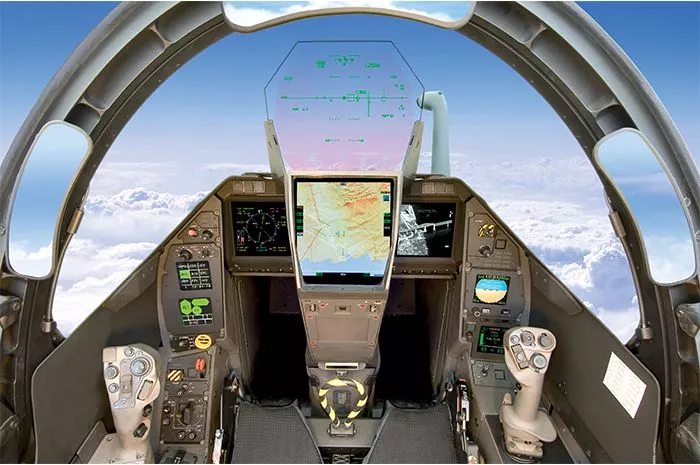
While the F-35, as a next-generation fighter, has a glass cockpit with a 20-by-8 inch panoramic touch screen along with a stand-by small display below the main display. This active-matrix liquid crystal display (AMLCD) developed by L3Harris Technologies, can withstand a failure or a crack, and still offer all its features on only one side. Cockpit also includes a speech recognition system developed by Adacel. The F-35 has no head-up display system. The flight and combat information puts on the helmet visor on a Helmet Mounted Display System (HMDS), allowing the pilot to see in any direction, no matter which way the pilot is facing.
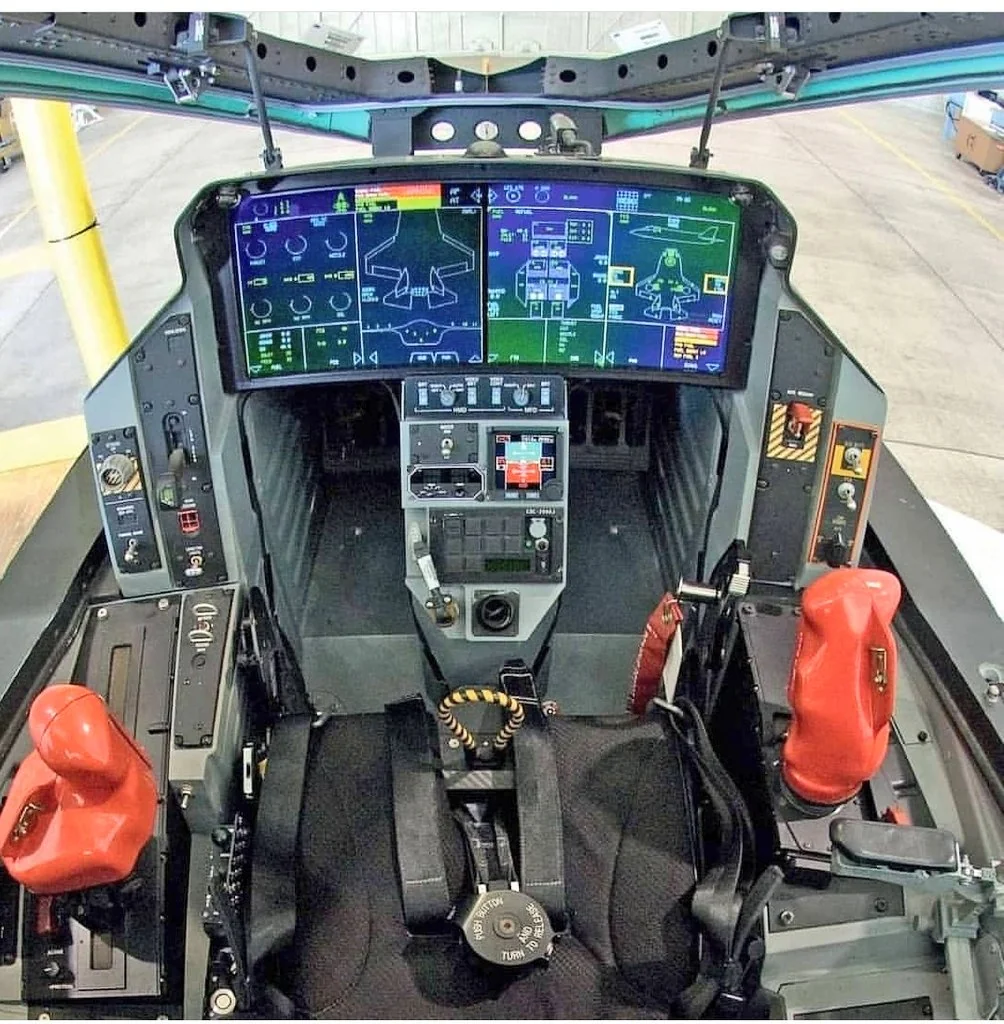
If we compare the cockpit of Rafale vs F-35, it is observed by experts that the F-35’s cockpit is more advanced and has more integrated systems than Rafale.
Stealth capabilities:
Both the Rafale and the F-35 are designed to have low observable or stealth capabilities, which can help them evade detection by enemy radars. However, the F-35’s stealth design is more advanced and comprehensive than the Rafale’s, and it is expected to receive upgrades that will further improve its stealth capabilities.
Specs & Performance of Rafale Fighter Jet vs F-35:
| Specs | Rafale | F-35 |
|---|---|---|
| Country Origin: | France | USA |
| Generation: | 4+ | 5th |
| Length: | 50.1 ft | 51 ft |
| Wing Span: | 35.7 ft | 35 ft |
| Height: | 17.3 ft | 14 ft |
| Engine: | 2 x Snecma M88-2 Turbofan | 1 x Pratt & Whitney F135 |
| Power: | 2 x 75 kN | 1 x 190 kN |
| Speed: | Mach 1.8 | Mach 1.6 |
| Range: | 3700 km | 2220 km |
| Service Ceiling: | 51,000 ft | 50,000 ft |
| Max Take-off Weight: | 54,000 lbs | 69,998 lbs |
| Cost: | $100-120 million | $77-101 million |
Operational Comparison:
Rafale aircraft take part in many combat operations. The fighter jet was first deployed in Afghanistan from 2007 to 2011. French forces took part in various targeting and bombing operations during that period against the terrorists’ hide-outs. The aircraft also took part in coalition operations over Libya. The fighter jet hit hundreds of targets, including air defense systems, command centers, fuel and ammunition storage dumps, tanks, and artillery, with exceptional accuracy during the operations.
From 2013 to 2015, French forces were involved in operations in Mali. During the operation, 4 Rafale fighter jets undertook the longest raid in French Air Force history, taking-off from Saint-Dizier in Eastern France and landed in N’Djamena, the capital of Chad. During this raid, aircraft engaged 21 targets and spent almost 9 hours and 35 minutes airborne.
Rafale aircraft was also used in air strikes in the Middle East, Iraq, and Syria as a part of an international coalition.
The Israeli Air Force deployed the F-35 against targets in Syria for the first time in live combat in 2018. No other real-time combat operational history is known related to the F-35 to date.
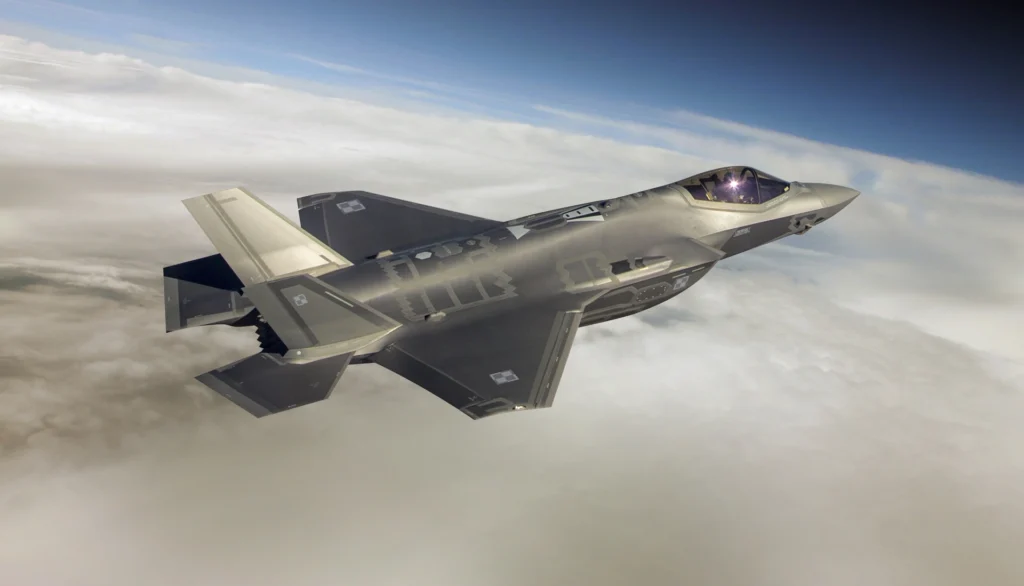
The F-35 is operating from 26 air bases around the globe while 1000+ jets have been produced so far. The United States Air Force (USAF) considers the F-35 a prime strike fighter for conducting the suppression of enemy air defenses (SEAD) missions.
Rafale on the other hand is a battle proven aircraft because it took part in many real combat missions and performed its duty well beyond expectations.
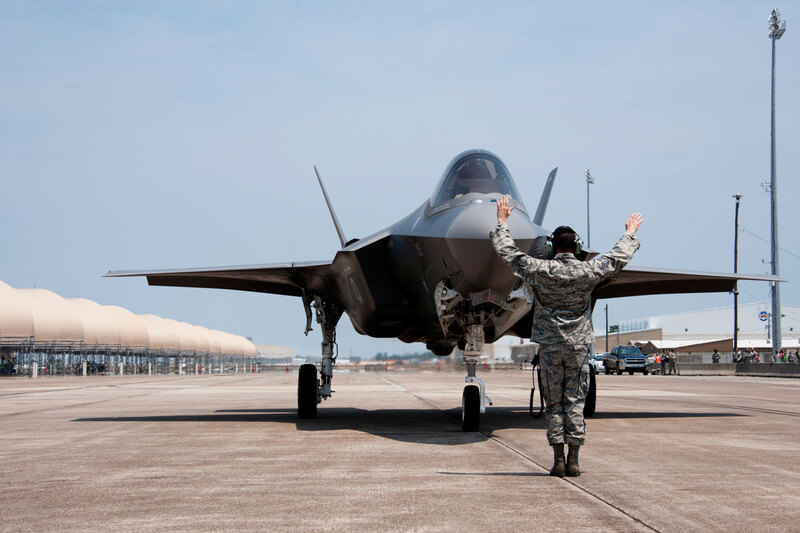
Considering the real combat experience of the Rale and less experienced F-35 jet, if we imagine the Rafale vs F-35 dogfight, Rafale has a slight edge over the advanced F-35 aircraft.
Rafale vs F-35 Cost Comparison:
The F-35 fighter aircraft was produced as part of a $1.5 trillion weapon program, the largest weapon program in human history. The US has spent more than $50 billion on its research & development program before the aircraft even entered service. With the per unit cost ranging from $77 million to $101 million of different variants, it is a formidable price tag for 5th-generation fighter jets.
Rafale plane comes-up with a slightly higher price tag. Per unit cost of the jet ranges from $100-120 million of variants F1 to F3. The latest F4 Rafale variant is under development and will soon enter service with the French Air Force. The price tag of the latest jet is unknown.
After analyzing the Rafale vs F-35 price details, we came to know that Rafale is slightly more expensive than F-35 even though it is a 4th-generation platform while F-35 is a 5th-generation jet.
Future Upgrades & Variants:
The Dassault Rafale has now been evolved to C (F3 or F3R) standard or third evolution and the new F4 standard is under development. Rafale-M, which is a marine variant of the jet specially designed for the French Navy.
The F-35 came in three variants A, B, and C. The F-35A variant, designed specifically for the US Air Force. The F-35B variant has short take-off and vertical landing (STOVL) capabilities and is designed specifically for the US Marine Corps. While the F-35C is a carrier-based (CV) variant used by the US Navy. It is the world’s first 5th-generation fighter jet variant designed especially for the navy.
We can also compare the naval variants Rafale-M vs F-35 C jets. Because these two variants are the most powerful of their entire fighter jet fleet. These variants also have some extra features to fulfill the needs of the navies.
In comparison to the Rafale vs F-35 Lightning II which is better aircraft, the F-35 is the most advanced fighter aircraft in the world right now and provides a base for the development of future 6th-generation aircraft. While Rafale is also a battle proven war machine.
The detailed comparison of the most advanced variants of these two jets i.e. Rafale F4 vs F-35 (latest iteration) will be discussed in more detail as soon as the information about the Rafale F4 will be available through their official websites.
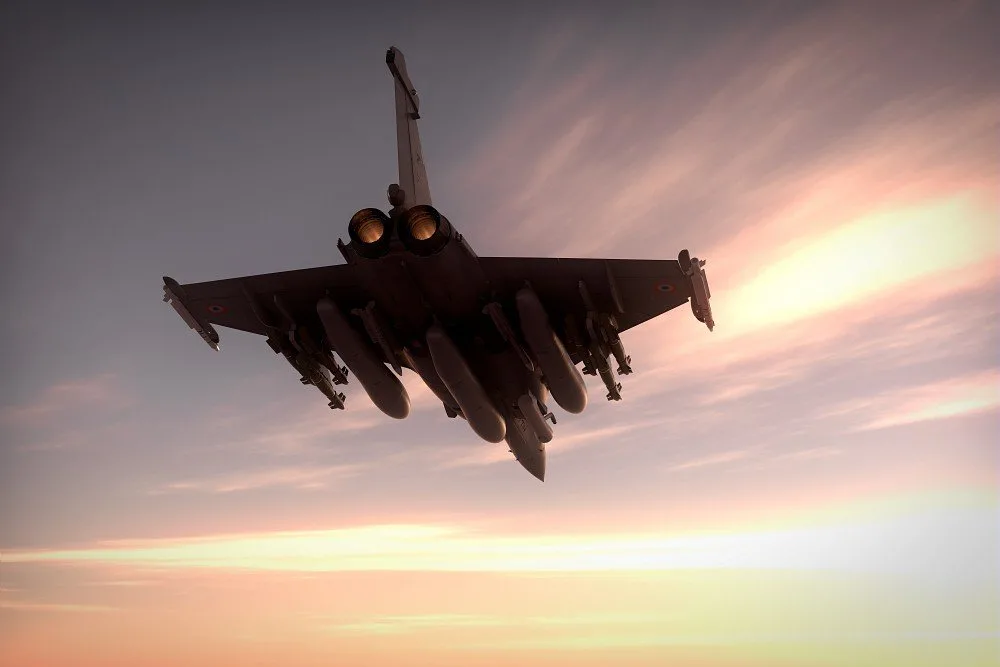
Analysis:
The major difference between Rafale F3-R vs F-35 jets are their generations. The F-35 is a 5th generation with advanced stealth capabilities, while Dassault Rafale being a 4.5 or 4+ generation is less stealth and less advanced.
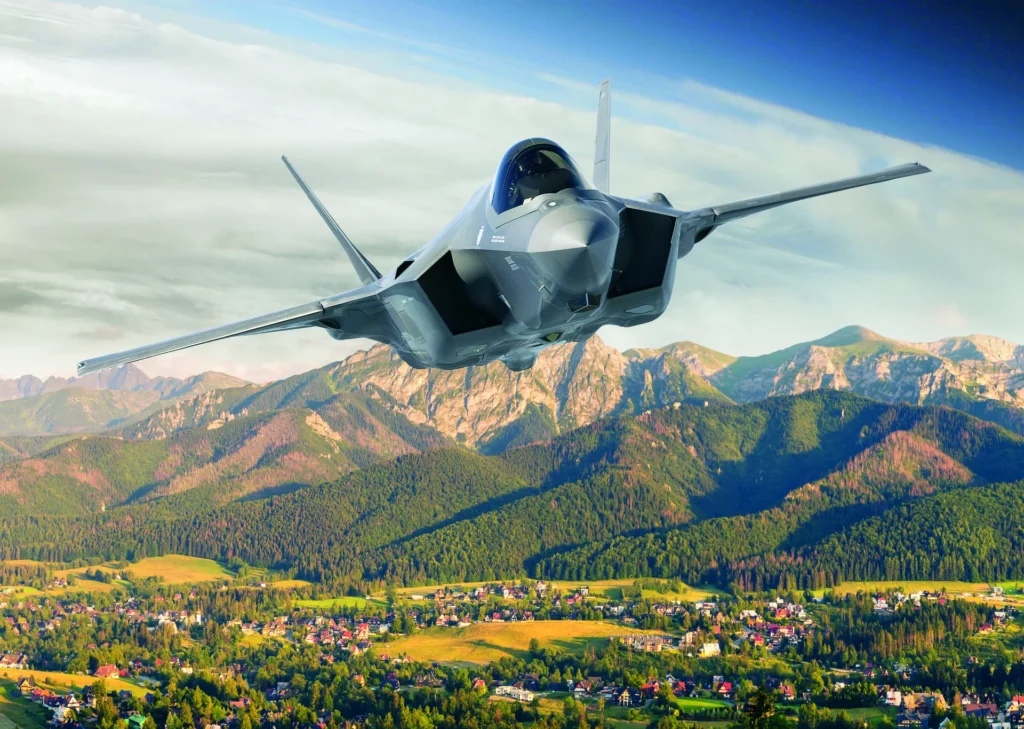
Overall, both the Rafale and F-35 are highly advanced fighter jets of their generations, with different design philosophies and capabilities. The Rafale is designed to perform a wide range of missions. While the F-35 can be used to suppress enemy air defenses, ground precision attacks, and gather info in a highly dense electronic warfare environment.
Ultimately, the choice between the Rafale vs F-35, the two aircraft will depend on the specific mission requirements and budget constraints.
Instant Info:
Which aircraft is better, Rafale or F-35?
Dassault Rafale and F-35 Lightning II are two most lethal fighter aircrafts of their generations. Rafale is a 4+ generation jet while F-35 is 5th-generation. The F-35 is more advanced than Rafale in terms of its avionics, sensor suite, radar, and engine efficiency.
Can Rafale fighter aircraft compete with F-22 Raptor?
Comparing the Rafale with the F-22 Raptor is not a good idea. But on paper the American F-22 Raptor is much more advanced and has sophisticated integrated technologies than the Rafale fighter jet.
Which 4th-generation fighter jet is better than Rafale?
In the 4th-generation category, Eurofighter Typhoon, American F-15 Eagle, FA-18 Super Hornet can be comparable to the Dassault Rafale fighter jet. Eurofighter Typhoon may be better than Rafale but no real-time combat data available to verify this.


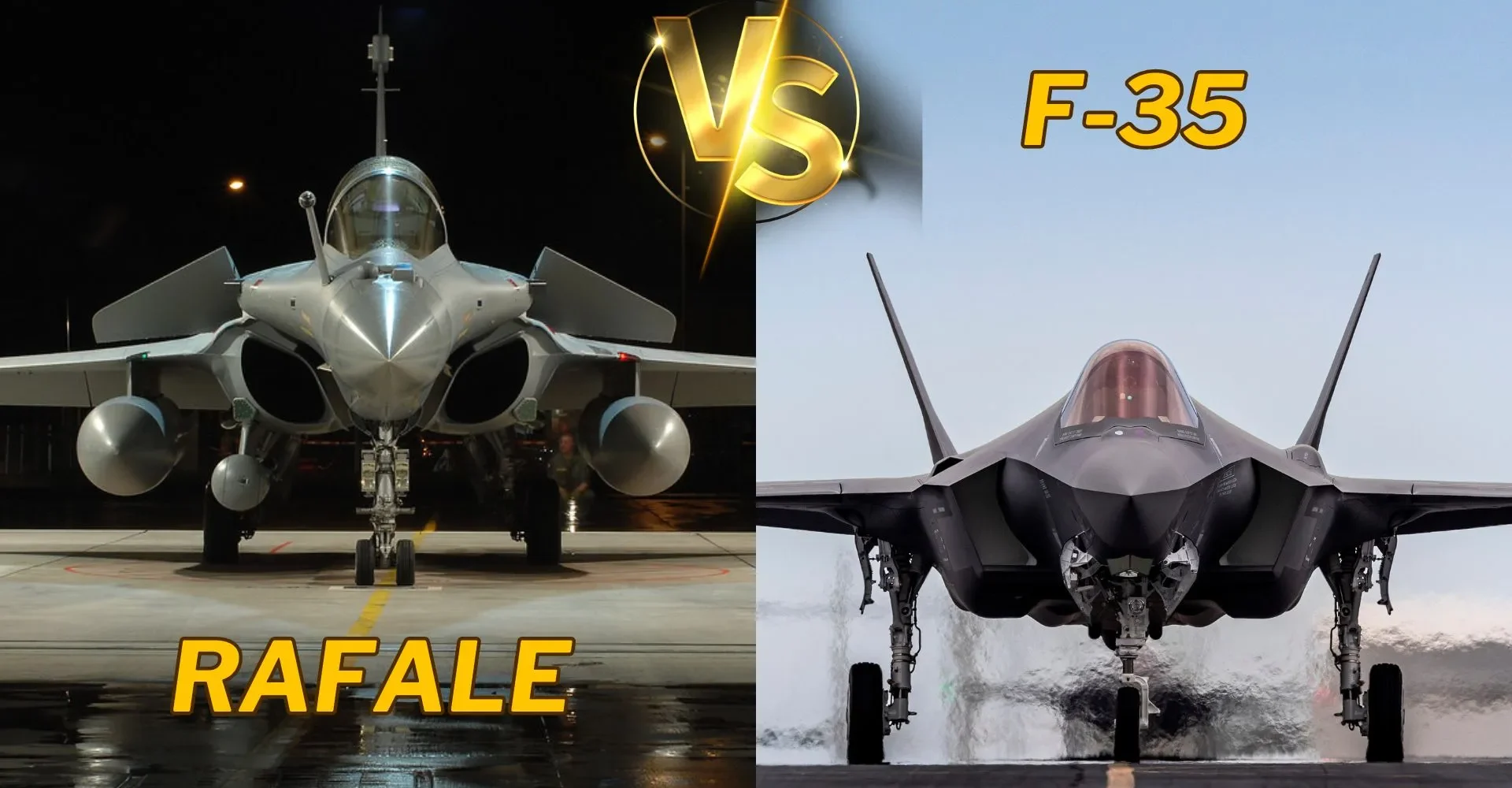
This entrance is unbelievable. The splendid substance displays the creator’s dedication. I’m overwhelmed and anticipate more such astonishing posts.
This page is fabulous. The brilliant information reveals the essayist’s interest. I’m awestruck and envision further such astonishing substance.
Usually I do not read article on blogs however I would like to say that this writeup very compelled me to take a look at and do so Your writing taste has been amazed me Thanks quite nice post
Its like you read my mind You appear to know so much about this like you wrote the book in it or something I think that you can do with a few pics to drive the message home a little bit but other than that this is fantastic blog A great read Ill certainly be back